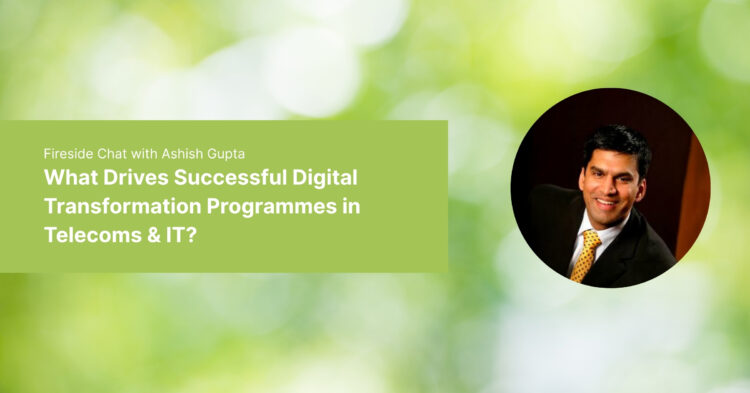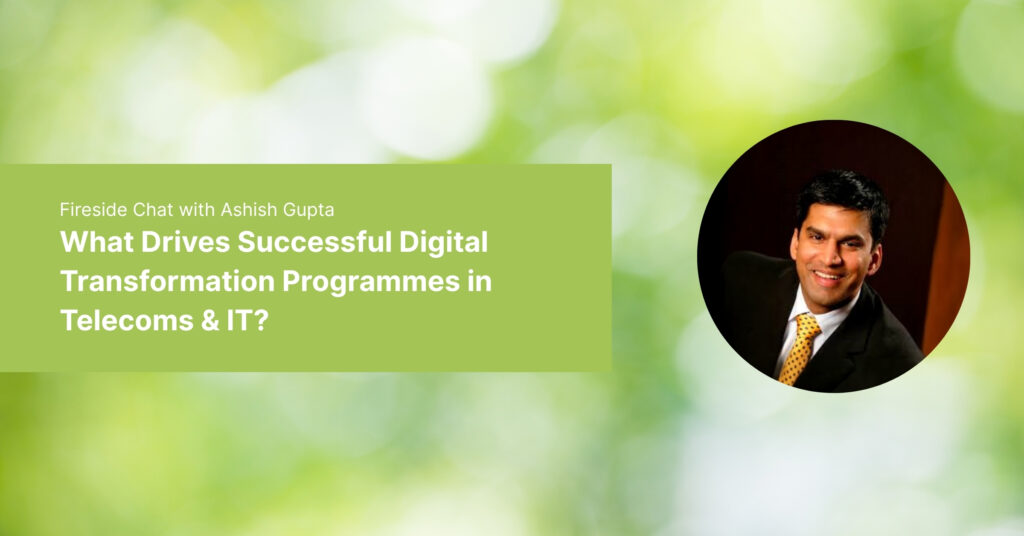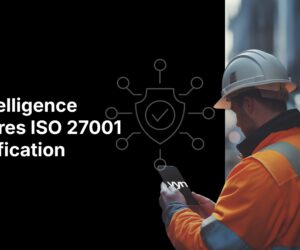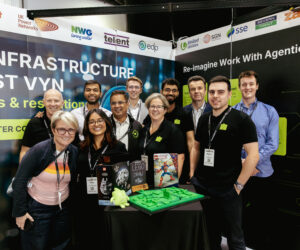
We met Ashish Gupta, Vyntelligence Advisor, ex-Managing Director of BT’s Corporate and Public Sector division, to learn about leading complex transformation programmes and driving innovative technology strategies across large organisations in telecoms and IT.

Can you tell us about your journey from your early days in Telecom and IT space to leading BT’s Corporate and Public Sector division?
My journey began in 1996, a Computer Science graduate joining Mahindra BT (now Tech Mahindra). After working on a BT project in Belfast, I formally joined BT in 2005. At Tech Mahindra, I evolved from mainframe work to leading CRM and Siebel implementations.
At BT, I started on the 21st Century Networks programme, replacing BT’s core network with next-gen IP. I then held various leadership roles, including platform development and CIO for Global Services, before moving into business-focused roles like heading products and leading banking/financial services.
After a brief departure, I returned to BT’s Enterprise division, serving as COO and then Managing Director for Corporate & Public Sector. In this role, I oversaw relationships with the UK public sector and large enterprises, and notably led the integration of BT’s Global Services and Enterprise businesses.
“I’ve worked across both IT and business roles. What excites me about Vyn is how it uses intelligence and AI in a focused way, helping frontline teams that often haven’t seen much innovation or investment”
You’ve led major digital transformation initiatives at companies like BT, helping organisations modernise and adapt. What do you see as the most critical success factor for companies going through digital transformation?
Digital transformation success hinges on a few key factors:
- Clear Vision: Have clear vision on what the transformation should achieve. It’s important not to take an overly incremental approach. Instead, start with a strong idea of what “good” looks like. That could mean reimagining a process, identifying new success metrics, or clearly understanding the reasons for transformation in the first place. If you know the purpose and what success looks like, you can build a programme around it.
- Strong Governance: The second is strong programme governance and change control. Transformation often involves complex processes and multiple stakeholders, without solid oversight, things can quickly fall off track.
- Speed: In my experience, the most successful programmes are those that are well-designed and executed within a sensible timeframe. When programmes stretch over three, four, or five years, they often struggle to deliver value. People lose interest, and organisational changes – such as leadership shifts or evolving business priorities – can derail the original objectives. It’s often better to design smaller, more focused initiatives that deliver measurable value quickly.
- Manage and Measure Value: Organisations juggle many priorities, so it’s important to clearly demonstrate the impact of transformation, not just to leadership, but to employees too. Everyone needs to see how it’s making the company better, improving experiences, and benefiting all stakeholders involved.
“Ultimately, you have to ask: Why is this creating a better experience? Why is it better for all the stakeholders involved in the business? Those are the questions that keep a programme grounded and purposeful.”
Robust connectivity is essential for both public and private sector organisations. From your experience, what are the biggest challenges in delivering future-proof infrastructure? And how do you see technologies like 5G and private networks shaping the next decade?
Infrastructure is often the unsung hero in the technology landscape. I’ve always said, imagine trying to use an iPhone 16 on a 2G network, what would you do with it? No matter how advanced our devices get, their performance depends on safe, secure, high-bandwidth, low-latency networks. Many of today’s applications need near-instantaneous responses, which makes infrastructure absolutely critical. The investments from companies like BT and Vodafone are vital. Without that foundation, advanced technologies can’t perform to their potential.
You can have the best tech in the world, but if you can’t reliably access a network, it becomes a real challenge. Fortunately, infrastructure is evolving. Edge computing and distributed networks are improving connectivity, but the need for secure, high-performing infrastructure remains constant. It’s the backbone of digital transformation and essential to unlocking the power of tools like AI.
You’ve often emphasised the importance of customer centricity and building strong, trusted partnerships. From your experience, what strategies are most effective in truly understanding and meeting clients needs? And how can technology help companies build long-term relationships with their customers?
It starts with genuinely understanding what the customer is trying to achieve. Not just their goals, but also the constraints they’re working within, like planning cycles, budgets, and operational realities. Too often, tech companies present a solution and expect the client to adapt. But customers are busy and need partners who tailor solutions to fit their world, whether that’s adjusting delivery models or offering more flexible commercial terms.
Of course, the core product experience matters. But beyond that, strong service, adaptability, and a willingness to work within the client’s broader business context make all the difference. Every client is different, and what they value most will vary. But for any technology or service platform to succeed with enterprise clients, understanding and aligning with the bigger picture is essential.
“It’s not just about great technology. It’s about shaping that technology to work within the customer’s world: operationally, commercially, and strategically.”

In your experience, how important is customer experience in the businesses you’ve worked with? As companies scale and pursue growth, how can they ensure they keep the customer at the heart of what they do, and where do you think gaps still exist?
Delivering a strong customer experience ultimately comes down to maintaining an ongoing, two-way dialogue. Companies approach this differently depending on their size. Some have dedicated customer success teams for high-touch engagement, while others use surveys or feedback loops to stay connected. Customer advisory forums can also be powerful, offering honest input that directly shapes product direction. And now, with AI and automation, feedback is being captured in real time, embedded directly into platforms.
It’s not about one magic formula. It’s about finding the right combination of listening channels that align with the nature of the business and its strategy, keeping you close to your customer in real, practical ways. The best organisations stay proactive, listen continuously, and respond thoughtfully. Being transparent about what can or can’t be done builds trust, and that long-term relationship, rooted in honesty and mutual respect, is what truly sets great companies apart.
Customer self-serve is becoming increasingly common across industries. For example, customers can now record short videos to show where fibre installation should happen, or what their property setup looks like to get faster connections. How important do you think innovations like this can impact or elevate customer experience?
Ultimately, customers are time-poor. What they want is a smooth, efficient experience that respects their time and delivers value. That’s where self-serve can be incredibly powerful. It makes processes quicker, easier, and more convenient.
It’s also about how it’s embedded into the customer journey so customers feel their contribution matters and improves the outcome. For example, if the journey is designed thoughtfully, as in, I receive an email confirming the order, and it clearly explains that taking a short video will help ensure a faster, easier installation, then as a customer, I will be very likely to engage.
So the real question isn’t whether self-serve is useful, it’s whether it’s designed and delivered in a way that makes the customer feel empowered, not burdened.
As you join our Board of Advisors, what excites you most about Vyntelligence’s mission? And where do you see the greatest potential for us to make an impact, particularly in the telecoms industry as we scale up?
What really excites me is that Vyntelligence is a technology business with a very clear focus. It’s sharply aimed at improving operational efficiency for field services, which is a space that often gets overlooked.
What also stood out is that Vyn already has an ecosystem of partners across industries like capital programmes, installations, and repair. These sectors share common challenges, and there’s a real opportunity to transfer learning and build scalable solutions across them.
Another strength is the simplicity of the current product packaging. Customers can quickly see how to gain value, which is important for adoption. It’s also using technology that’s highly relevant today, especially with AI becoming more mainstream. But what really resonates with me is that the platform is built around improving the experience of field engineers and customers. That’s often overlooked in digital transformations.
Finally, you mentioned you enjoy reading leadership books. Is there one that has had a lasting impact on you?
One book that really stood out to me is ‘The Heart of Business’ by Hubert Joly. What I appreciated most was that it touched on culture, team organisation, incentive systems, and leadership mindset. Joly shares how he led a company through transformation by putting people at the centre, promoting talent from the shop floor, rethinking traditional performance management and building a culture of purpose and trust.
It’s a practical, people-first approach to leadership. The book blends strategy with real human insight, which made it both relatable and inspiring. There are many great leadership books out there, but this one stood out because of how grounded it was in real-world experience.
Interested in our previous fireside chats? Click here



